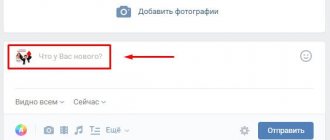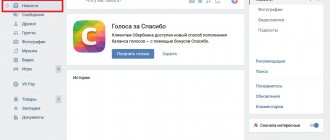Yesterday I published an article on Sparke about PC and mobile applications for startups, which we use ourselves and recommend to others.
The founder of the site, Evgeniy Dyachenko, decided to send a link to Spark to his employees. Naturally, the employees liked the publications (about 10 people).
After that we received the following message:
Guys, it’s the weak-hearted who get likes. We are watching you.
This message, as an honest PR specialist and a fair person, upset me and even offended me.
I believe that in a real team, employees care about the common cause, are aware of events, can express their opinions on this or that topic, think it’s cool what we all do, and are happy about our publications.
Some will say
Yes, I have 100 people in my company, so they’ll all like it at once, is that normal?!
– in my opinion, it would be cool if all 100 people are really happy about the company’s achievements and read what you write.
The comment about cheating also prompted me to share tips on how to recognize and deal with cheating votes.
Today, cheating services are offered everywhere you look. For example, a Google search returned 385,000 options!
How to determine cheating on VKontakte
There are many pages on VKontakte with fake subscribers. Even commercial communities often buy them: some SMMers think that a large number of subscribers will increase trust in the company.
Before checking for cheating, determine the number of blocked participants. These are not necessarily bots - sometimes users are hacked, and the administration of the social network blocks such pages. Look at the page's follower count and then go to the Members tab. The number here is smaller, and the difference between these indicators is the number of blocked participants.
Analyze your community subscribers. For regional communities, select a filter by city. In a community with live members, the majority of members should be from the same city. A large percentage of subscribers from Voronezh in a pizzeria group from Novosibirsk would arouse suspicion.
We filtered the participants by city, the number changed to only 1,300 people. It looks like the subscribers are real.
See what other pages members are subscribed to. Offers are not created separately for each group, so the same accounts turn out to be members of different pages that bought subscribers. To check for bots, use any parser. Even a free tool will do. Section "Similar Communities".
Cheating kills advertising for bloggers
Advertising does not bring the expected results
This is the primary and obvious harm from cheating. Large and medium-sized businesses work with bloggers primarily for reputation and coverage, while not forgetting about the economics of collaboration.
For example, a food delivery service decided to conduct an information campaign so that as many people as possible would know about it. One of the metrics for assessing reach is CPM (cost per thousand impressions). By ordering advertising from a blogger, a business also expects to receive a CPM lower than the cost of another type of advertising.
If a blogger has gained subscribers and likes, then he shows the customer a screenshot of stories that receive, for example, 100,000 impressions. Businesses understand that with the cost of three stories being 20,000 rubles, the CPM will be around 0.2–0.3 rubles per thousand impressions. But when the actual reach does not exceed 20,000 impressions, the CPM rises dramatically to 1 ruble per 1,000 impressions. And if the CPM is lower in other channels, then in the short term it would be more profitable to invest this money in them.
Small businesses and bloggers can consider the cost of a subscriber. The logic is the same here - you expect to get a subscriber for 2 rubles, but you get it for 10. And this is no longer profitable if you can attract one from a target for 5 rubles.
Definition of cheats on Instagram
Before the advent of algorithmic feeds, you could navigate by reach and activity. Now even accounts with live followers can have low reach and ER. By the way, this is why you don’t need to focus on the number of subscribers when buying advertising. Instead, evaluate audience activity and the content of comments.
You can detect cheating using Popsters (the service supports 10 popular social networks). Load the account you are interested in and check if there are any posts with a sharp increase in likes or comments.
Jumps in activity do not always mean boost: perhaps the post was included in the recommendations and therefore received more coverage. Read the comments carefully: are they written by living people? What is their length and content? If you are still in doubt, ask the blogger for statistics specifically for this post to assess the reach. It's much more difficult to screw it up.
Checking reposts and likes
Dead souls in VK
Competitions on social networks are built on the same principle, where it is important for participants to get more likes or reposts. To fulfill the conditions, many ask friends and acquaintances to do the latter, but not all. The most cunning ones begin to use special programs called bots.
The software collects advertising pages or profiles of people participating in the exchange of likes or reposts. The more accounts are included in the system, the higher the number of likes. But there are pitfalls here that make it possible to identify a sly person and deprive him of the opportunity to participate in a promotion or draw.
Approximately 80% of VK profiles that work with this program are blocked by the administration. This is shown by a corresponding picture, which is easily identified among the photographs of real users. It is enough to look at the profile of likes to understand whether a person is honest or not.
It is necessary to evaluate one more item - the names of people in the profile, their avatar and the number of groups. If there is a naked girl in the picture, there are a lot of communities and dubious services are offered, know that this is another bot. A participant may be disqualified from the competition. But this method does not always allow you to identify cheating.
conclusions
- Before buying advertising, analyze the community for promotion.
- On VKontakte, use a filter by city for regional communities or parse target communities of subscribers.
- On Instagram, look for unusual spikes in activity and read comments on posts.
- Twitter, use special tools to find fakes.
- On Facebook, rate users manually.
Interesting articles continuing the topic:
- What a marketer should know about social media scrapers;
- A complete guide to VK statistics;
- Study of user activity on social networks in 2018;
- How to audit an Instagram account, algorithm and nuances of verification.
Fake likes
It would seem, why create high-quality content for an image group or company page, and then promote it? After all, you can easily outsmart everyone. It’s enough to go to one of the popular sites that promises us a lot of likes completely free of charge: you just need to “like” other users and wait for a response from them. If you're short on time, you can buy hundreds of likes cheaply. It seems that everything is fair: like for like, repost for repost. The problem arose when many users of such resources realized that there was no need to “burn” their real pages, it was enough to create a wrong account that you didn’t mind littering. Filling it out so that it looks at least a little like a real person is a waste of time. Most likely, the VKontakte administration will ban him in a couple of days for being too suspicious.
As a result, under many entries and photos you can see the following picture:
Such a number of “dogs” should immediately alert you.
Although not such an obvious sign, a large number of strange avatars or pages without them should also raise suspicions.
I’ll immediately note that if the material was published a long time ago, and among the likes there are from 1 to 5% “dead dogs,” then this is normal. Most likely, these were real users who had already deleted pages, or bots who themselves were active, thereby attracting the attention of the account owner to their page. If there are no other signs of cheating, then everything is ok.
Also compare the number of views and about. On average (it can vary greatly depending on the topic and target audience), with 100 views, a good post gets about 10 likes. True, these statistics work if it was published no more than 3 days ago (then the post can be seen several more times by users who have already liked it, but views from their account continue to be counted).
Too many likes or, conversely, too few should alert you.
For example, here the percentage of likes from the number of views is significantly higher than average.
In addition, if all posts get an equal number of likes, this is also a “bell”. It is impossible to generate equally popular content; users always like something more, and they don’t react to something at all. Here it is worth focusing on the situation as a whole, and not on individual examples.
How to see your VK likes
Very often we need to see what or who we liked on VK or from our page, but how to do this? In order to see what photos, posts, etc. in general, in order to see your VK likes, you need to go to the bookmarks section in the right panel (star pattern) and select what interests you (photos, posts, posts, etc.) That's all you will see all your likes from your page. Here is a screenshot
How to make money on VK likes
There are many services that offer to earn us real money for our likes, reposts, joining groups, etc. But the best and time-tested service is
The service is very simple and everything is clear, follow the link and select the role of whom we registered on the site.
And let's start earning money with our likes and subscriptions, on average for 1 friend addition they give 0.22 per like 10 kopecks on the Internet there is a bot in an hour you can earn about 20-30 rubles per day about 100 rubles per month about 3 thousand. Withdrawals are made to the Web Money payment system.
Without really trying, I earned 50 rubles a day, but I could have done more, I was just too lazy
Fake subscribers
As for community subscribers, identifying fake ones will also not be difficult. There are several proven methods.
For example, if the group is regional, then first, by searching for subscribers, you need to check how many participants in the group are from Russia (or from the country in which the group’s target audience is located).
If the number has sharply decreased, this is a reason to think about it and select the region the group is focused on in the search.
In the selected example, the difference between the number of subscribers and the number of people from St. Petersburg is almost 5 times! This suggests that with a high degree of probability the subscribers were scammed. Of course, someone could specifically indicate the wrong region, someone recently moved and decided to leave their hometown. A small difference in the number of subscribers would be normal and natural, but when in the St. Petersburg group of people from St. Petersburg there is only one fifth of the total number, the conclusions suggest themselves.
This method of checking does not work in entertainment and thematic groups, but there are others that are no less effective.
If you just entered the group and immediately see a “dead dog” among the subscribers, most likely she is not alone there, and this is a reason to check the quality of the subscribers’ accounts more carefully.
And if several of these “dogs” pop up at once, you should know: the group is full of bots.
It’s also worth comparing the number of likes and the number of views of each post. For example, in thematic groups, a high-quality post receives about 10% of the number of views in the first day after publication. Views are approximately 4–5 times less than subscribers in the group. With a large number of subscribers, these statistics may be distorted. It all depends on the topic of the community.
For example, in the popular group “Evil Corporation,” which has more than 7,330,000 subscribers, a post gets about 400,000 views and about 13,000 likes per day. It turns out that only 3% of users who saw it like the post.
By the way, standard advertising posts (not viral advertising) can get 10–20 likes even in communities with a population of millions, and this is also normal, because Users rarely rate an advertisement, even if it interests them and they click the link.
First, you need to calculate the approximate percentage of fake subscribers and understand how many truly “live” users there are who are your target audience. After that, look at the price of placing an advertising post. If it is adequate to the number of real participants (administrators understand perfectly well that cheating is easy to calculate) and corresponds to the average market price for advertising in a public page with such a number of users, then you can place advertising. If the price is too high, look for another community.
Perhaps these are the main and most effective ways to recognize false activity, which will help you not only really evaluate your competitors, but also not waste your advertising budget in communities, the number of subscribers of which can be increased several times, if not entirely composed of bots.
Attracting the attention of a client is a difficult task that requires the implementation of a specific marketing strategy, time and effort. A popular way to make a product recognizable is to use various competitions on social networks. The winners receive valuable prizes, but determining who is worthy is sometimes more difficult than it seems. How to expose fraud in such promotions, read further in the article.
Special service sites for getting likes
Some competition fans have long realized that automatic boosting of likes through bots is easily recognized. This deprives you of the desired result and prevents you from being among the winners. Automatic methods have begun to be replaced by semi-automatic ones, in the form of special service sites for boosting indicators.
A striking example of such a web resource is Vktarget, which allows you to get likes not only on VKontakte, but also on other social networks. A person, for a small amount, launches a campaign with targeting, age, number of subscribers, and so on. This suggests that people are more real, and therefore it is more difficult to distinguish cheaters.
Everything would be fine, but the VK administration is on the alert, helping to identify a problematic character. People want to make money on such sites, so they place junk advertising messages on the pages, which causes blocking. It turns out that here too you need to analyze the profile of likes, but not at the end of the competition, but in several time periods.
Thus, the dynamics and number of blocked profiles can be traced, which clearly indicates the use of specialized sites. Logic and observation will help solve the problem. But there is another way where it is much more difficult to determine cheating.











